Icon Practice and Building Visual Vocabulary
A bit of background information about the "icons" that appear as part of Illustrate Your Week, plus a story of a clover and a shamrock
One of the things I added to my weekly Illustrate Your Week prompt set in the last year or so was the "visual icons" (or "icons") list. Each week, I list a few common objects that are specifically called out as "icons." That immediately suggests these, specifically, as things to draw (as opposed to the rest of this list, which might be handled with text), but for me, it also means "draw simply."
I use this prompt set as icon practice. Because I have a deep interest in sketchnoting, I know how important it is to build a visual vocabulary so that when you think about what to draw to represent something you are capturing, you can call upon a mental image of that object, one you can draw quickly and simply.
Sketchnoting isn't about drawing fully fleshed-out, detailed, realistic drawings. It makes use of much simpler combinations of line and shape, quick drawings that are easy to draw, easy to recognize, and get the point across. It's the difference in some ways between a quick contour or outline and a more realistic drawing, but the visual illustrations you call upon when you work in a sketchnote style need to be ones you can immediately pull out of your brain. If you are truly working on the spot and sketchnoting in real-time, you need a repository of images you can draw, on demand, without a reference. You just need to know "how" to draw an archery target (bullseye), a paper airplane, a fish, a pyramid of blocks, and so on. (And you need to be able to draw those in your own style because even icons have voice!)
I've talked extensively about the fact that I don't "picture" things in my head. It's complicated. I won't rehash it here other than to note that this reality has a lot to do with why I deliberately practice drawing icons.

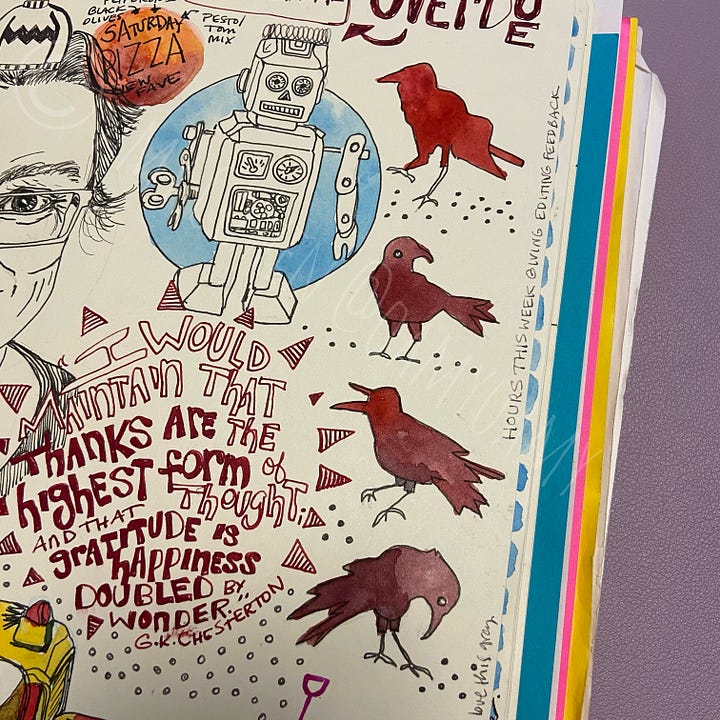
"Icon" Prompts
I don't set rules for how people use the Illustrate Your Week prompts. I wouldn't use someone else's prompts if there were a bunch of rules attached. I don't even set rules for myself for what happens each week, with the exception of a self-portrait. I really do believe the illustrated journal is and should be flexible, free-form, and individual. It should morph and adapt to meet your needs and what you want to get out of the project (or onto the page).
Even so, I have noticed that the intent behind the "icon practice" may have gotten lost or may never have been clear to some people who find the prompts and decide to give them a try. Since I have been posting a new set of prompts every week for several years, and I try to change up the text that goes along with the post, the early text that explained the addition of the "icons" disappeared along the way.
The small Instagram caption hasn't been able to hold everything week to week (which is why I'm relishing in all the space here that lets me share some of what I am gathering for a larger guide). I spend a lot of time crafting and debating and finalize each weekly prompt set. (Did you know?) It is nice to be able to give a little more context here on the substack.
I was thinking about the icons this week because they came up.
A Clover and a Shamrock
A stitch journal embroidery project is something I have in process for the year. In simplest terms, it involves stitching an icon to represent each day. There are many, many ways to do this and many examples of people who do it with very simple outlines or with very complex, detailed, and sometimes dimensional icons. As with most creative projects, there isn't a single way to approach it.
This project continues to be one I struggle to maintain. Knowing this, my goal is to keep it simple, complicated enough that I am satisfied with the icons, but also simple. I always start with something very simple, much like the icons I draw in my journal or in a sketchnote. And just like when I draw the icons in my journal, I tend to need a reference. I almost always have to look up whatever I intend to draw (and then stitch).
It might seem obvious to you how to draw the outline of an airplane. But when I get ready to draw a plane, I can't sort out how the lines actually work, unless I look at a picture. I know it's basically a horizontal tube of sorts, with the front end forming a rounded point, and I know there are windows down the side and wings along the side and an upright and yet angled tail at the back. Without a reference, however, I'm not able to sort these elements out. (I stopped right now while writing and tried this…. And it's chaotic and laughable. Although I've talked about this often, I think many people really underestimate what a problem this is.)
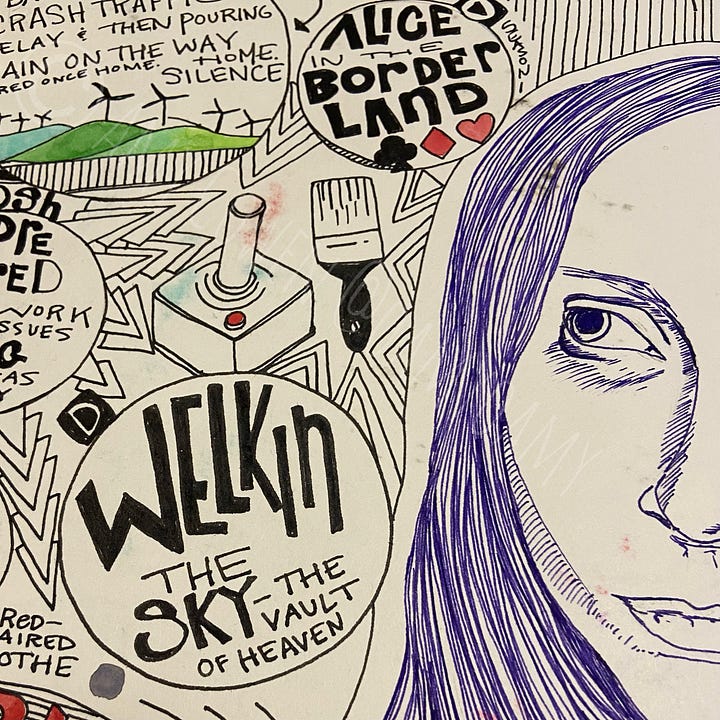
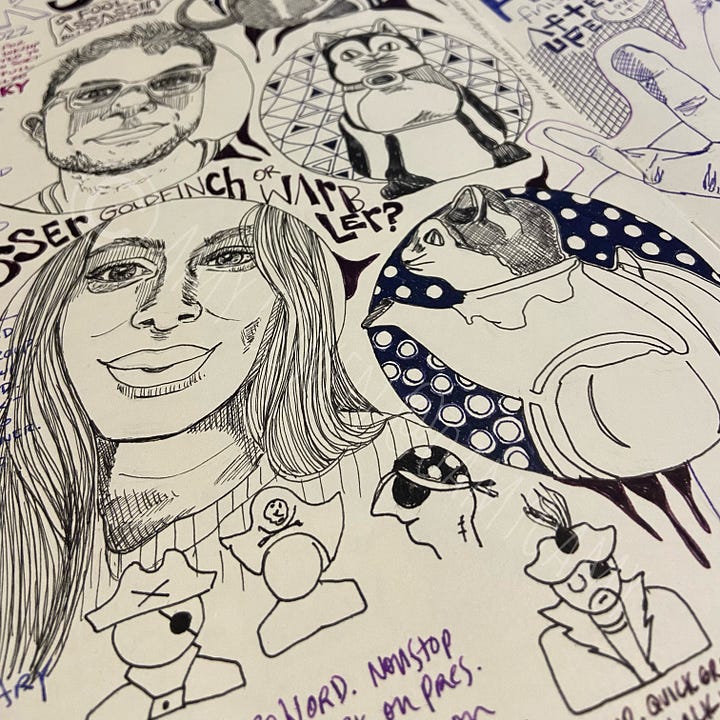
This process and this inability to retain a mental image of even the most basic nouns in our everyday lives, things that children learn from the early days of picture books, frustrates me (so much). It has a lot to do with why I struggle with my graphic novel (or comic) work, too, and while I want so badly to be sketchnoting everything, the visual vocabulary remains a stumbling block.
This week, I was penciling in some icons on my stitch journal to work on catching up. (I often get behind with this project.) I had noted a shamrock for a specific day, and yet when I went to draw it, what I basically drew was a 3-leaf clover (or a playing card "club"). I looked at it and thought, "hmmmm, I didn't realize a club and a shamrock were the same." I should have stopped right then and looked it up. I stitched this tiny "shamrock" a day or so later, and as I was filling it in, I kept thinking, "this really looks like a club." Too late, I looked it up and realized my error…. There is a significant difference between a shamrock and a three-leaf clover!
Not being able to simply draw what I need, even a simple icon, without a reference is frustrating, but pulling up reference photos is now simply a part of how I work. This is how I work around my lack of mental images. The Noun Project is a great resource for looking at a wide range of approaches to drawing an icon. Similarly, you can often find examples by searching for "x clip art" or "x line art" or "x outline drawing." Click to view the image search, and generally you will find plenty of simple line art that can help you better understand, in the moment, the shape of what you are drawing.
You will find that there are many, many ways to draw any simple icon. My apple won't look like yours. When you need to draw a "notebook" or a "notepad," there are an infinite number of ways you might approach it.
My hope was that by drawing icons every week, I would get better at doing them and somehow build up some muscle memory. I'm not sure that's happened. It may be that I won't ever retain these shapes. But I've found that I enjoy sprinkling them into my pages. Some weeks, I draw the same object multiple times, maybe in different ways. I am often trying to find an approach that I like, one that feels like me or that I find easiest and most straightforward to draw. Other times, I might just draw one.
You can certainly do full-drawings of anything listed in the prompts. But if it helps to know that you don't have to, then I hope this explanation was useful. They can, really, be just a bit of extra practice.
I went looking for the pages in my sketchbook where I started this process (before it was even in the prompts). I didn't find exactly what I was seeking (which I think was a series of notepads), but I did turn up lots and lots of examples from recent weeks. I like the bit of visual interest and texture they add to my pages. They have become, really, a bit of extra whimsy in the way I build my pages.
The Value of Practice and Repetition
Maybe someday I'll be able to draw a plane, although my three-second test just now has me shaking my head. I do think that next time I might come closer to a shamrock!
I include icons in the lineup each week, and though I try and not repeat them often, I do think there is immense value in repeating them. It’s going to take me more than once, I’m sure!
Here (and scattered above) are a few examples from assorted pages. I've cropped most of these so you just get a sense of them without seeing them in full context, (Journals are, at the core, very personal.) In these images, you’ll see ordinary objects interspersed, bell pepper, calendar, paper airplane, floppy disks, a joystick, whale, pencil sharpener, magnet, and so on.
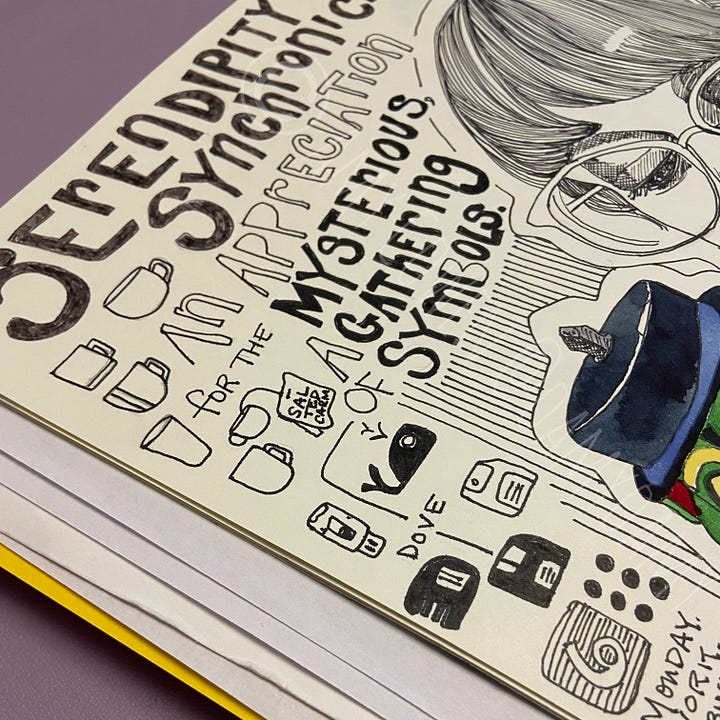
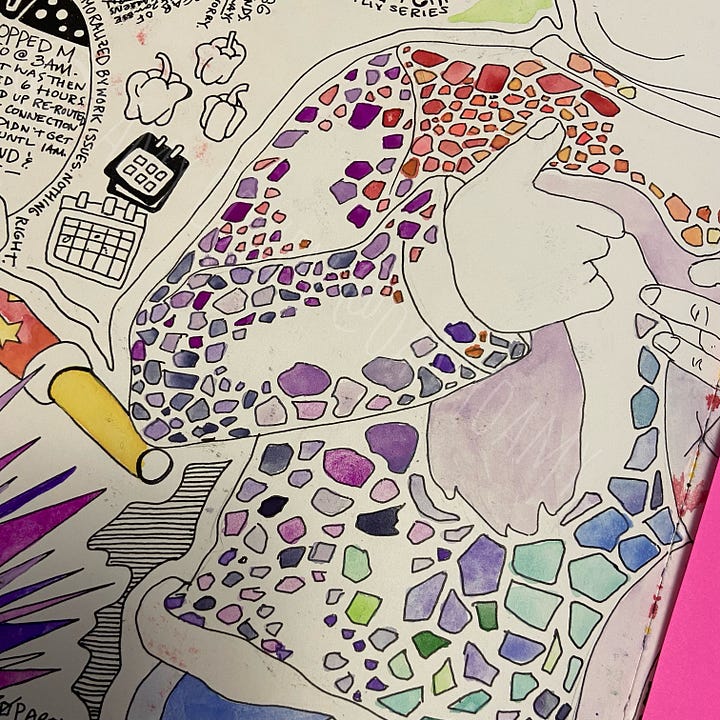
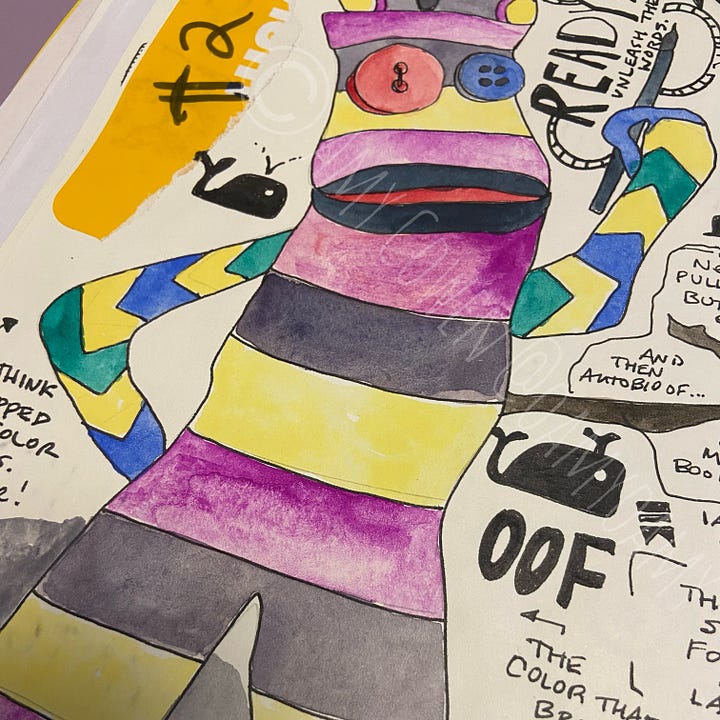
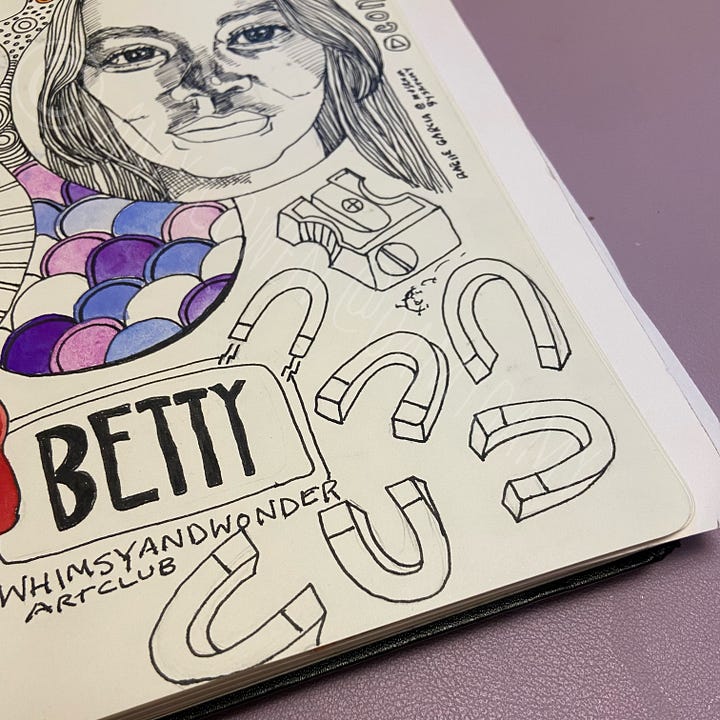
(I keep thinking I need to do a test and pull up the icon list and see how many I can draw. I likely need to do this every month. If, however, I still can't draw any of them, then it may simply be that even with repetition and practice, I just can't hold and store this information. Knowing that, I'll continue to find ways to work around it. I have some thoughts on that even as I get ready to do more sketchnoting.)
I hope you’ll follow along as I continue to build out information here about Illustrate Your Week, keeping an illustrated journal (any kind), and using visual journaling as a way to increase mindfulness, instill balance, and help you record and preserve memory.



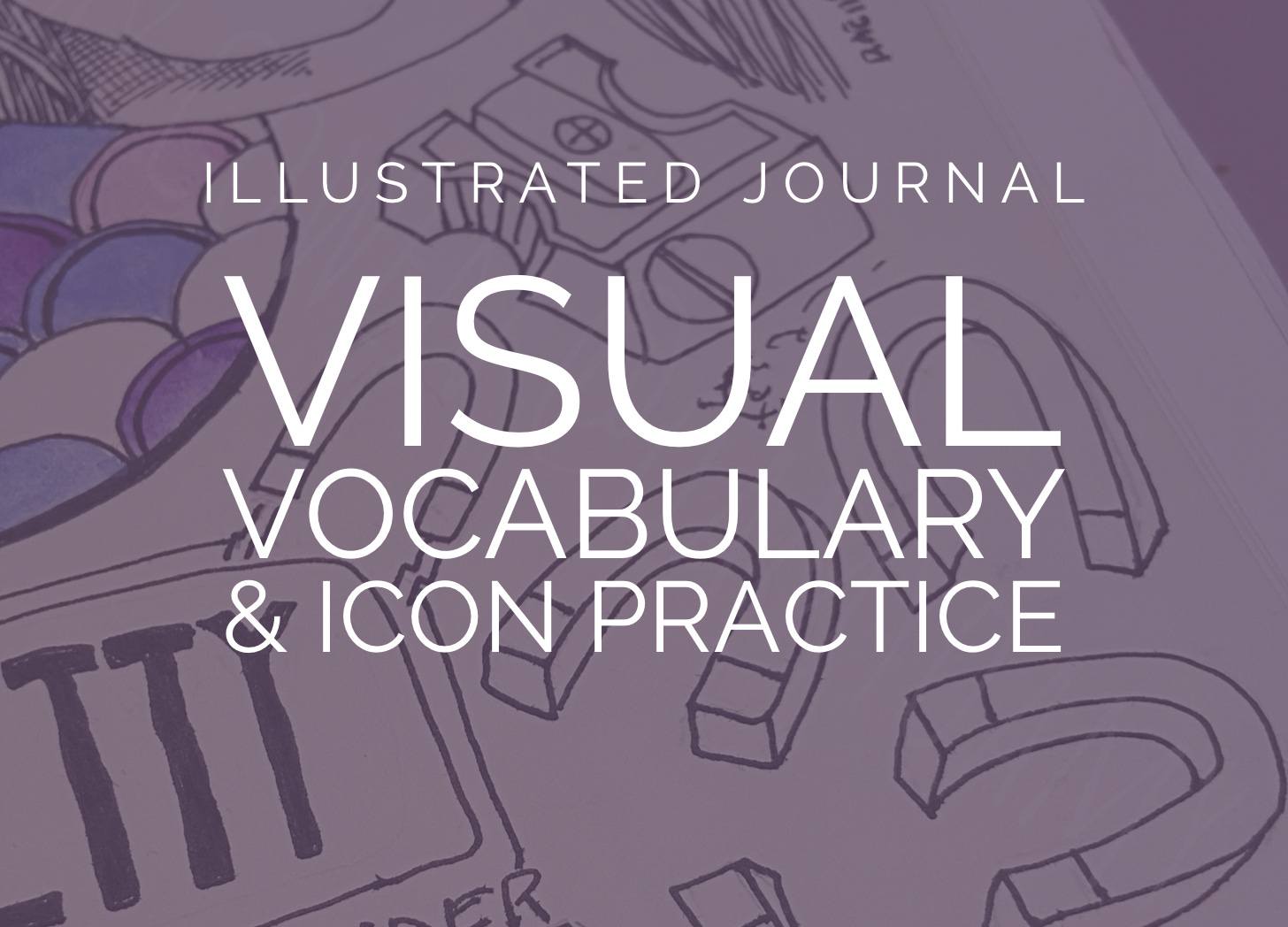
Well, you are not alone with your struggle of trying to draw "on the fly" the ideas in your head without a reference. I totally get it, I am in the same space and it makes me mad at times, and I feel even embarrassed at times that I can't draw a simple something despite knowing exactly what it looks like in my head! I really enjoyed your behind the scenes idea for the icon prompts. I bet your sewn icon book must look amazing! Such a brilliant idea.
I'm glad I am not alone in not being able to draw the simplest things from memory. I keep meaning to try to practice so this is a good reminder for me. Those are wonderful examples from your journal pages. Love those whales!